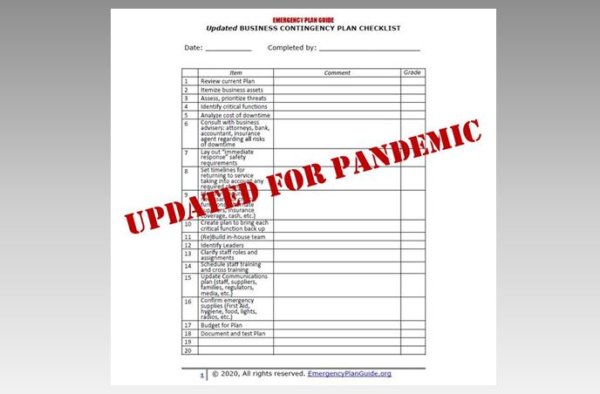Heading back to work

If you are like most business owners and employees in America, your company is somewhere on the line between “still shut” to “fully operational.” Many of your employees heading back to work, even if they are healthy, may be struggling with finances, transportation, and home schooling. These are unsettling times, in large part because the pandemic was so totally unexpected.
“Who would ever have guessed we’d have a pandemic?!”
If you watch the news, you’ve probably heard that statement a few times. But what I have heard hanging around online with emergency managers goes a little differently.
“Every good business continuity plan does have “pandemic” on its list of threats!”
Of course, just being on the “list of threats” doesn’t mean it gets included in the plan with full details. Still, having planned for a half-dozen or so of the most LIKELY threats puts your business on much stronger footing when ANY disaster hits.
So while we’re all dealing with heading back to work, it makes sense to once again revisit . . .
The role of emergency preparedness in the workplace.
Here at Emergency Plan Guide we address preparedness for small business in about 25% of our Advisories. We included a book on emergency preparedness for small business in our Neighborhood Disaster Survival series.
We think that business has the potentially most important role of all in improving community-wide resilience! You can click here to read more about why we think that.
Right now, however, businesses need to get their people back to work.
Part of heading back to work includes updating the business continuity plan.
We revisited our own Business Continuity Plan Checklist to help you with that update.
How to use the Business Continuity Plan checklist.
The full checklist is simple. It consists of just 20 steps. The first one is to go through the list and give each step in your current plan a “grade” as to how completely that step has been done. (We include a few hints in a couple of pages of accompanying notes.)
I’d print out several copies and share with selected leaders or senior managers. Have each person grade the company plan separately. Then get together and compare notes. This may be an eye-opening experience!
The checklist is a tool, not a plan.
It can serve two purposes. First, it can help you identify weaknesses in your existing continuity plan. Second, if you don’t have a plan yet, it may give you a push to get started.
You can download the full Checklist here and have it ready to go on Monday.
Virginia
Your Emergency Plan Guide team
P.S. Our country has been severely shaken by an emergency most people hadn’t planned for. If ever there were a time to take another look at the value of your business continuity plan, this should be it. Of course, planning doesn’t keep bad things from happening. But planning can help get you through unexpected events. This is an important time.
